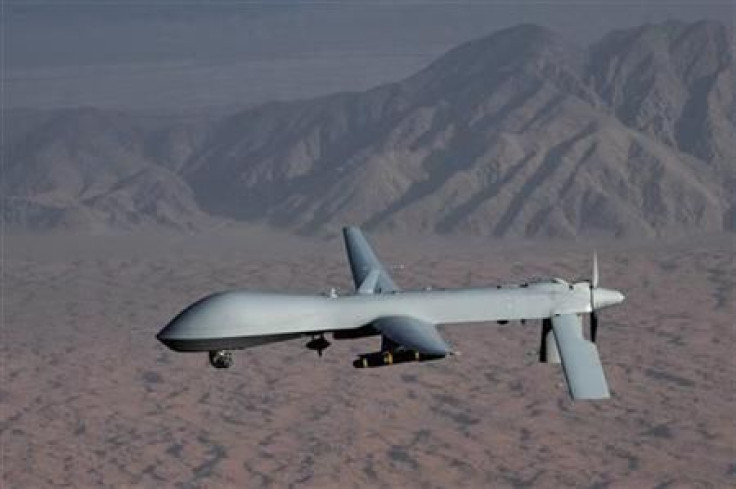US Attack On Al-Shabab In Somalia Demonstrates Growing Presence In Africa

Pentagon spokesman Admiral John Kirby confirmed on Tuesday that the U.S. had hit, using "manned and unmanned aircraft," a small town in Somalia where commanders from the al-Shabab militant group were meeting, including the group’s leader, Ahmed Abdi Godane. The attacks come as the U.S. seeks to bolster its forces in Africa in the face of growing Islamic terror threats in the region.
Somali officials also confirmed the U.S. strike. Kirby would not say whether Godane had been killed, as several sources have reported.
The strikes, which took place about 105 miles (170 km) outside the capital Mogadishu in the Lower Shabelle region, were conducted by aircraft armed with Hellfire missiles, Kirby said. Hellfires are commonly carried by drones rather than manned aircraft. Local residents reported seeing something that resembled an AC-130 gunship, a tweet by Somali journalist Harun Maruf indicated.
BREAKING: Airstrikes involved drones and AC-130 gunships, residents report. The US has used AC-130 assets in 1993, 2007 attacks in Somalia.
— Harun Maruf (@harunmaruf) September 2, 2014The governor of Lower Shabelle region, Abdukadir Mohamed Nur Siidii, said the strike hit a remote area near the town of Sablaale, which coincided with a meeting among senior commanders of al-Shabab. "We have reports that Ahmed Abdi Godane was among several officials killed in this attack," he said.
Kirby said the U.S. is “assessing the results of the operation and will provide additional information as and when appropriate.”
While the U.S. has periodically hit targets in Somalia, the most recent attack came just one day after heavily armed Islamic extremists took control of Godko Jilacow, a high-security prison in the country’s capital, and almost a year after Islamic militants pushed back a Navy SEAL attack in the same region. Government forces have since retained control of the prison as of early Monday.
The attacks come as the U.S. military attempts to expand its forces in Africa, successfully negotiating with the government of Niger to open a drone base in the Sahara part of the country, as it looks to monitor a crossing point in the desert. The base offers the U.S. another hub of operations to monitor North and West Africa, in addition to its hubs in Ethiopia, Uganda, South Sudan, Kenya, Djibouti and the Seychelles.
Also, a New York Times report from Monday says the Pentagon and State Department have backed an African force of around 22,000 that has driven Al-Shabaab from its bases in Mogadishu.
But the U.S. has had a significant presence in Africa for a number of years. According to a Washington Post article from 2012, as many as 16 unmanned aircraft take off every day from Camp Lemonnier, a U.S. naval expeditionary base in Djibouti, which has functioned as the base of operations for missions in Africa and the Middle East. According to the report, the site is linked to Special Operations Command and hosts as many as 300 special operations personnel who plan attacks and raids.
In addition, an unclassified diplomatic cable from 2008 indicated that the U.S. may be using Manda Bay, Kenya, to launch attacks against Somali militants across the border in Somalia. The Kenyan government has publicly denied it hosts U.S. drone surveillance flights.
© Copyright IBTimes 2024. All rights reserved.












